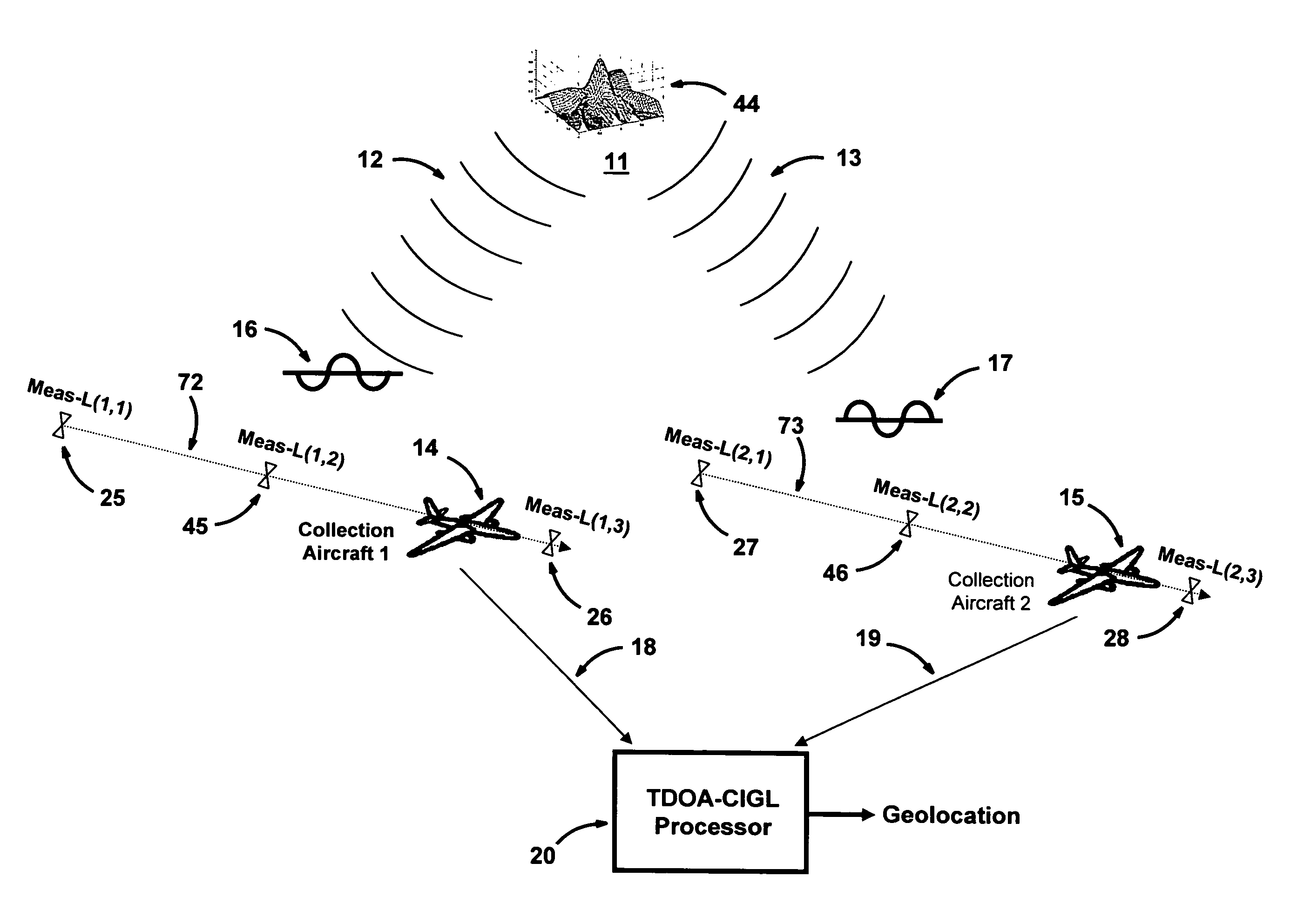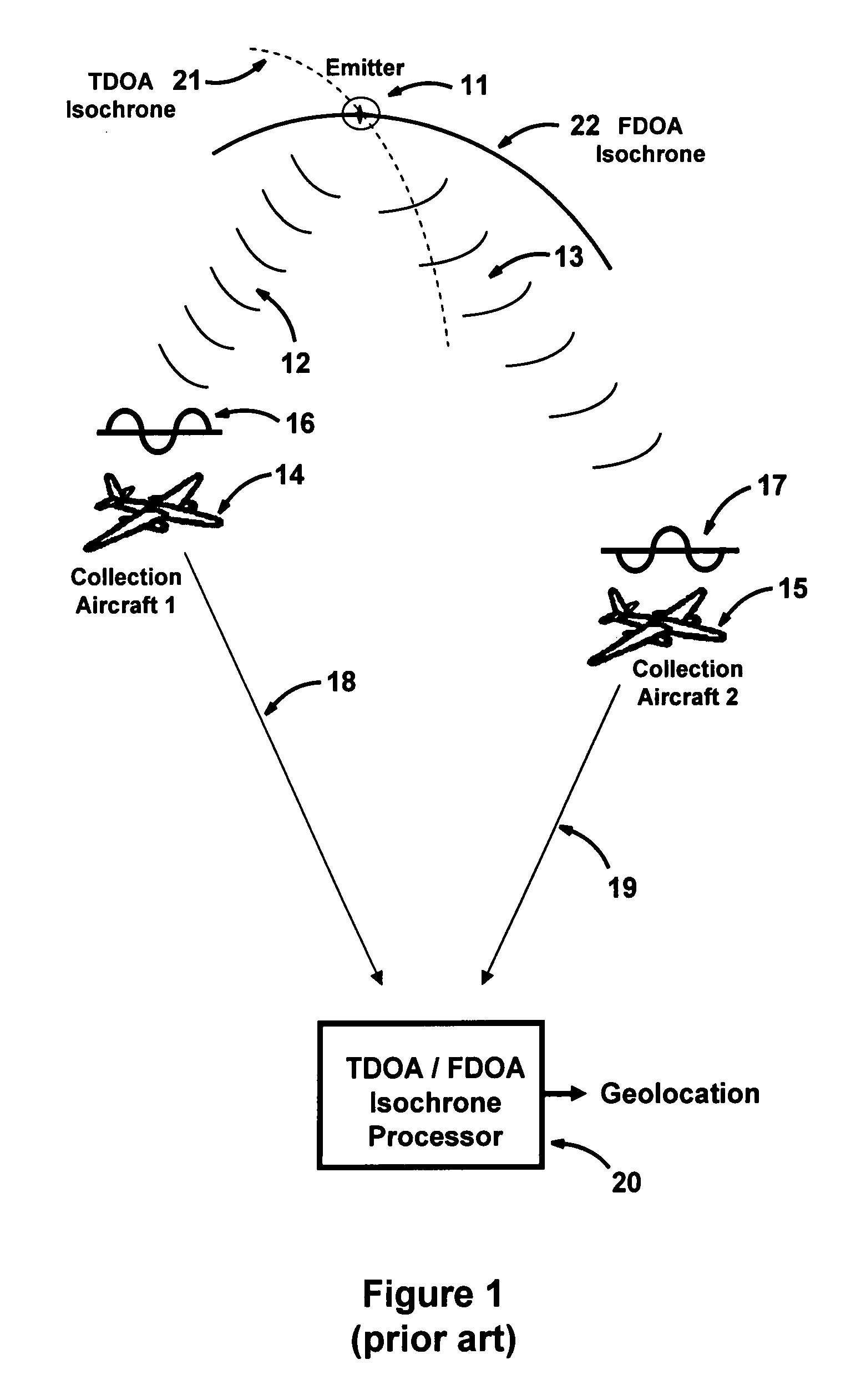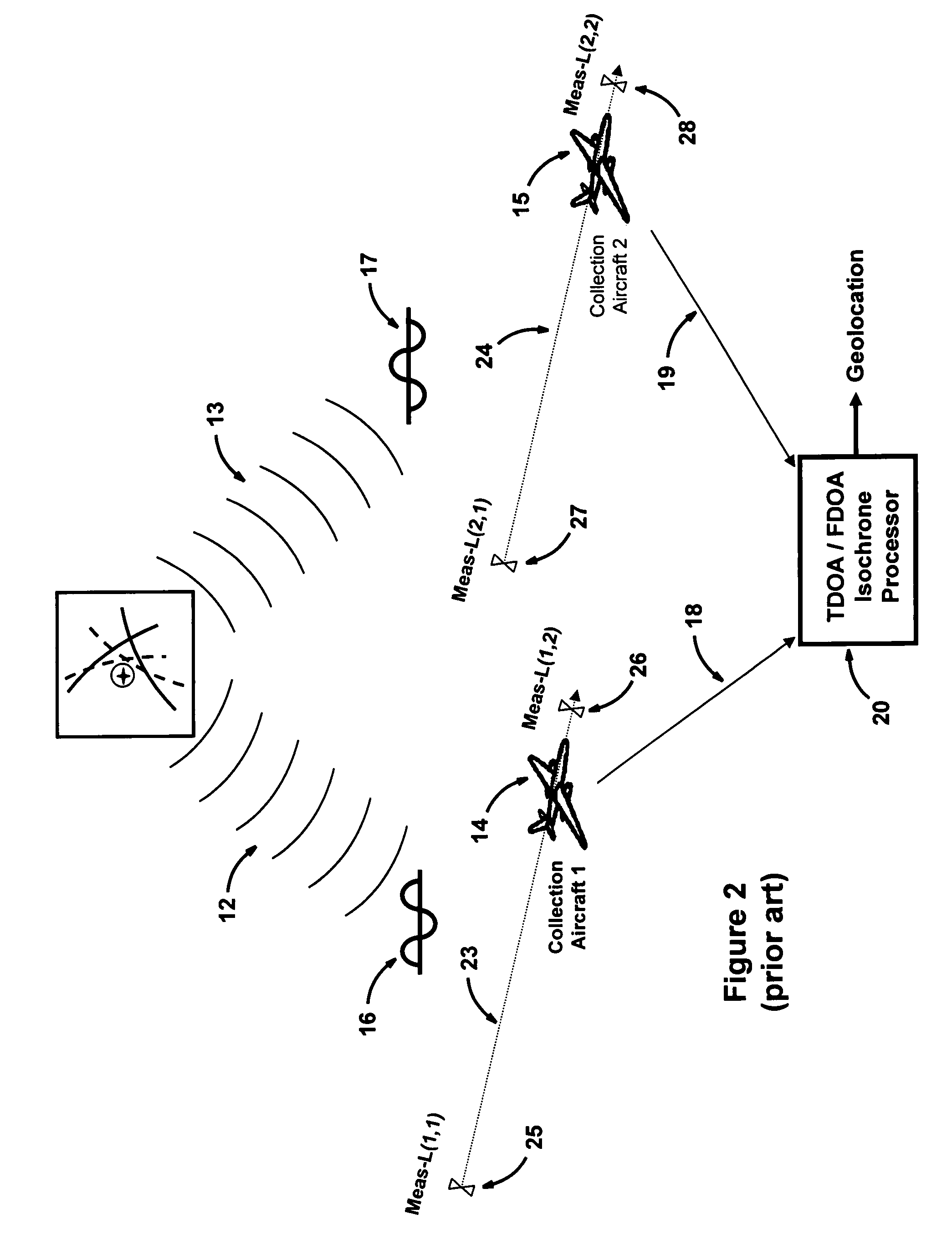Multiplatform TDOA correlation interferometer geolocation
a geolocation and interferometer technology, applied in the field of radio geolocation, to achieve the effect of improving the accuracy of geolocation
- Summary
- Abstract
- Description
- Claims
- Application Information
AI Technical Summary
Benefits of technology
Problems solved by technology
Method used
Image
Examples
Embodiment Construction
[0040]The novel combination of TDOA and CIGL signal processing described herein solves problems of the prior art and improves on transmitter geolocation from moving aircraft. CIGL is adapted to TDOA / FDOA processing as described immediately herebelow. The theory for the present invention is described after a description of the Figures.
[0041]FIG. 1 shows a prior art TDOA / FDOA radio geolocation system that utilizes receivers on separate aircraft 14 and 15 receiving a signal over paths 12 and 13 from a remote emitter / transmitter 11. The radio geolocation system on the aircraft 14 and 15 processes and retransmits the received signals via paths 18 and 19 to a central TDOA / FDOA processor for determining TDOA and FDOA isochrones 21 and 22 to geolocate remote emitter / transmitter 11. Further in this specification, with reference to FIG. 3, is a detailed description of these isochrones and their use in locating transmitter 11, and of TDOA and FDOA.
[0042]A TDOA radio geolocation system utilizin...
PUM
 Login to View More
Login to View More Abstract
Description
Claims
Application Information
 Login to View More
Login to View More - R&D
- Intellectual Property
- Life Sciences
- Materials
- Tech Scout
- Unparalleled Data Quality
- Higher Quality Content
- 60% Fewer Hallucinations
Browse by: Latest US Patents, China's latest patents, Technical Efficacy Thesaurus, Application Domain, Technology Topic, Popular Technical Reports.
© 2025 PatSnap. All rights reserved.Legal|Privacy policy|Modern Slavery Act Transparency Statement|Sitemap|About US| Contact US: help@patsnap.com



